2012 Hyundai Genesis Review [Video]

The answer to the question “Would you buy a Hyundai Genesis or a Mercedes E-Class” is no longer “not ever” but rather, “not yet.” Beyond novelty, there’s no cache to the name. And in the luxury business, where such bragging rights are earned over time, Hyundai’s luxury effort is still in its infancy.
FAST FACTS
1. New for 2012 is an R-Spec model with 19-inch wheels, high-performance tires, bigger brakes, custom transmission and steering settings, a modified suspension and a 429-hp 5.0L V8.
2. All models get an 8-speed automatic transmission and the V6 gains 43-hp for a total of 333-hp.
3. Pricing starts at $34,200 and jumps significantly to $44,500 for the 4.6L V8. R-Spec models retail for $46,500.
4. Fuel economy improves across the board, with the 3.8L V8 now at 19/29-mpg, the 4.6L V8 at 17/26-mpg, while the R-Spec is pegged at 16/25-mpg.
GENESIS DESIGN MATURES
While still short of being a serious rival, Hyundai is getting closer with every update. Most notably for 2012 is an improved exterior, allowing the Genesis to now pass for a genuine luxury sedan in the parking lot of any country club, with more sculpted lines and a bold grille that’s close enough to segment rivals, but finally starting to express a design language all its own.
Notable changes include larger intake openings on the front of the car, plus LED lights. More chiseled side skirts run down the side of the car, while aluminum window trim exchanges faux-luxury for a more premium-athletic style. New rear LED lights jump off the bodywork, while a redesigned bumper with integrated exhaust tips complete the package.
Beyond this new look, Hyundai has also made significant changes under the hood, upping the output of the base V6, while offering a potent R-Spec V8 model with far more horsepower than you’d ever expect from a Korea automaker.
V6 NO LONGER LEAVES YOU WANTING
Through the addition of direct-injection the 3.8-liter V6 gets 43 more horsepower for a new total of 333-hp. Torque also gets a 27 lb-ft bump to 291. Following suit with its targeted luxury rivals Hyundai has even developed its own 8-speed automatic transmission, which works to improve fuel economy and deliver a smoother driving experience. In total, fuel economy is up 1-mpg in the city and 2-mpg on the highway for a total of 19/29-mpg.
The down-side of the 8-speed is that with so many gears it’s never in the one you want for spirited driving. True, there is a self-shifting function, but no one ever uses that. Adding direct-injection does make for a louder engine at idle, a small drawback considering it’s a luxury car and will almost always be piloted with the windows up and the climate control pegged.
Hyundai doesn’t claim any extra performance gain from the powertrain enhancements, but there are benefits. It’s decisively fast and delivers solid torque eliminating any need, and almost all of the want, for a V8.
The same 8-speed box appears on the unchanged 385-hp 4.6-liter V8, and rather surprisingly doesn’t help city fuel economy at all and only improves highway mileage by one tick for a 16/26-mpg rating.
R-SPEC SEDAN KEEPS CONTENT, GAINS PERFORMANCE
Things get exciting when you jump to the newly-introduced R-Spec model. Previously Hyundai had only offered R-Spec versions of the Genesis Coupe, delivering the high-trim performance options without all the frills, making for a car that retails only slightly above the base model. Trying this tactic on the luxury crowd would leave Hyundai with a glut of models on dealer lots, so instead, the first R-Spec sedan adds performance, while keeping all the goodies.
Under the hood is an engine that is easily the most significant shot across the bow of luxury automakers since the introduction of the Genesis itself in 2009. Adding 400ccs of displacement to the brand’s “Tau” V8 and slapping on a direct-injection system the new 5.0 makes 429-hp.
With plenty of extra torque this luxury saloon will power out of a stop sideways like a muscle car while simultaneously delivering a serene highway cruise. What makes the R-Spec V8 a tough sell at first is that despite the difference of almost 100-hp over the V6 the real performance gap between the two doesn’t show fully until above 60 mph, with the big displacement engine delivering thrust at 80-mph like it does at 30-mph.
R-Spec models get more than just a big engine, however, with larger 19-inch wheels and high-performance Bridgestone tires, not to mention a thicker rear sway bar and specific tuning for the suspension, transmission and steering.
There’s little doubt the R-Spec model is the superior performance machine, although no credit can be given to the steering. Instead, we’d argue the largest factor is the pricey performance rubber, helping reduce understeer significantly from the rest of the models. If Hyundais have one overarching fault, it’s in the steering department, and the R-Spec model is no exception. Its issue is unique, however, with good reaction but an overall electronically contrived feel that’ll leave you uncertain about your trajectory, making mid-corner corrections like a real-world version of the Cruis’n USA arcade game. By comparison, steering on non R-Spec models isn’t as heavy or as direct, but it is more natural.
When we first drove the car in Las Vegas we commented on how the glass-smooth blacktop was hardly a test of its real-world capabilities and that mid-western roads might prove a less-forgiving proving ground. We were right. When pushed during this drive on the rural roads outside Detroit the R-spec model was notably less confident in the corners, becoming unsettled by the road’s imperfections. To be fair, that issue only showed itself in the R-Spec model at speeds beyond what the rest of the lineup could muster.
Apart from the performance advantages, the R-Spec model comes equipped with all of the available features, including a few new tricks for 2012: a Lane Departure Warning System, heated rear seats and a TFT LCD display between the two main gauges, adding a touch more high-tech style to the cabin. Other R-Spec upgrades include custom floor mats, a rear badge, black chrome headlight housings and, thankfully, the removal of the woodgrain trim on the steering wheel.
INTERIOR STILL NEEDS WORK
On all models the interior is really the only drawback to the car, lagging behind the rest of the vehicle and in some areas a far cry from the level of refinement the competition has on offer.
Despite being silver, most of the buttons both look and feel like plastic, and when combined with the ice blue lighting used on the rest of the Hyundai lineup it gives the impression that you’re driving a Sonata. There are some nice touches, in particular the leather inserts on the doors and dash, available on the V6 and standard on V8 models, which really gives a true luxury car feel. The same goes for the upgraded premium leather, a significant jump-up from the near-vinyl use on the base V6. Unfortunately, after paying for those upgrades you’re still left with wood trim that’s even out-classed by the cupboards at your cottage.
And while not the final critique of the cabin, the “multimedia controller” used to operate many features on the display screen simply feels low quality to touch and flimsy when you turn it.
THE VERDICT
Compared to rivals in the luxury segment Hyundai has seen a much higher take-rate for its V8 offering and for good reason. For starters, with a lower price relative to the competition it’s possible to drive off in a V8-powered Genesis for roughly the same money as a six-cylinder German or Japanese model. But perhaps the bigger reason is the small price difference between the two, with Hyundai making the V8 too attractive to refuse.
When we first drove the new 2012 Genesis lineup AutoGuide’s Derek Kreindler commented that the V6 is the car to get, with the upgraded 333-hp engine not wanting in the acceleration department. Starting at $34,200 a fully-loaded six jumps to $43,000 and comes with all of the luxury and tech features that are standard on the V8. What makes the V8 an easy option box to tick is the fact that it only adds $1,500 more. The R-Spec model is just $2,000 on top of that.
Taken as a whole, the V6 is the better engineered vehicle, offering a more balanced package of luxury, performance, comfort and price. But considering how little your local Hyundai dealer will want to upgrade you into a serious V8-powered performance machine… it’ll be hard not to.
LOVE IT
- Refined look
- Solid engines, even V6
- Excellent value
LEAVE IT
- Some low grade interior trim
- Steering on R-Spec model
RELATED READING
2012 Hyundai Genesis Review
2011 BMW 535i Review
2011 BMW 528i Review [Video]
2010 Mercedes-Benz E350 4MATIC Review
2011 Chrysler 300 Review

With AutoGuide from its launch, Colum previously acted as Editor-in-Chief of Modified Luxury & Exotics magazine where he became a certifiable car snob driving supercars like the Koenigsegg CCX and racing down the autobahn in anything over 500 hp. He has won numerous automotive journalism awards including the Best Video Journalism Award in 2014 and 2015 from the Automotive Journalists Association of Canada (AJAC). Colum founded Geared Content Studios, VerticalScope's in-house branded content division and works to find ways to integrate brands organically into content.
More by Colum Wood


















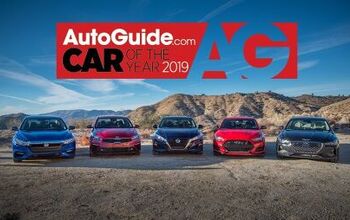
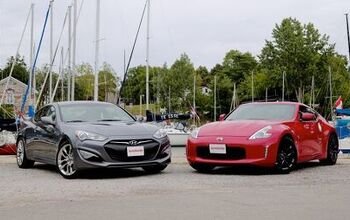
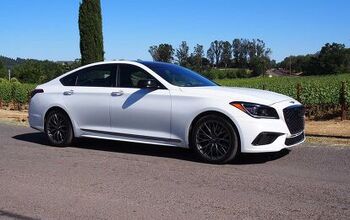
![2012 Hyundai Elantra GLS Review [Video]](https://cdn-fastly.autoguide.com/media/2023/06/26/06122/2012-hyundai-elantra-gls-review-video.jpg?size=350x220)
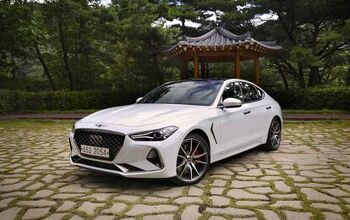
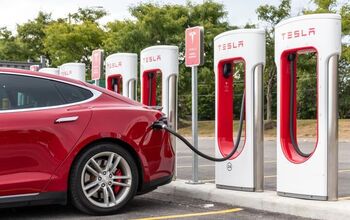
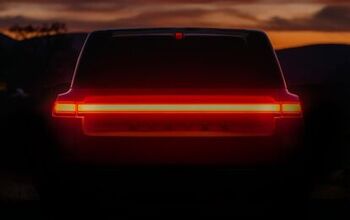
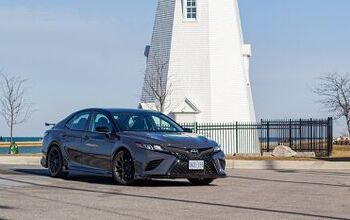
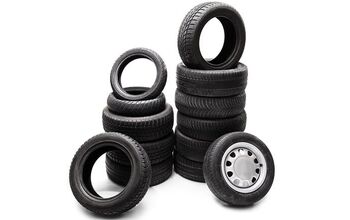



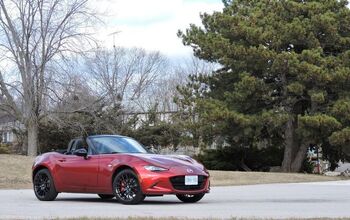


Comments
Join the conversation